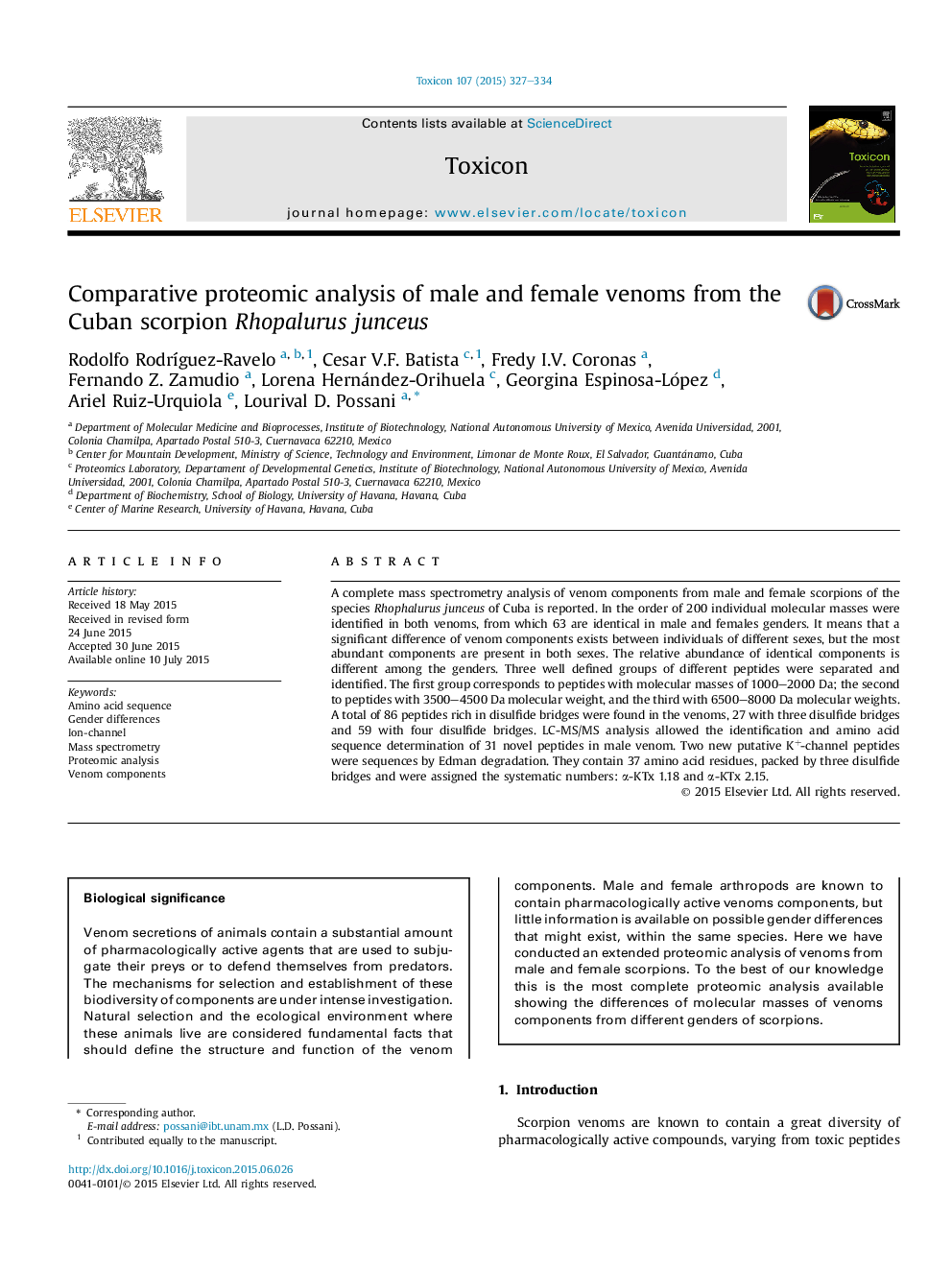| Article ID | Journal | Published Year | Pages | File Type |
|---|---|---|---|---|
| 2064295 | Toxicon | 2015 | 8 Pages |
•Molecular masses of male and female venom components of R. junceus were analyzed.•Major venom components are in both genders but show different relative concentrations.•Peptides containing disulfide bridges are the most evident components in both genders.•New peptides with sequence similarities to K+-channel blocking peptides are described.
A complete mass spectrometry analysis of venom components from male and female scorpions of the species Rhophalurus junceus of Cuba is reported. In the order of 200 individual molecular masses were identified in both venoms, from which 63 are identical in male and females genders. It means that a significant difference of venom components exists between individuals of different sexes, but the most abundant components are present in both sexes. The relative abundance of identical components is different among the genders. Three well defined groups of different peptides were separated and identified. The first group corresponds to peptides with molecular masses of 1000–2000 Da; the second to peptides with 3500–4500 Da molecular weight, and the third with 6500–8000 Da molecular weights. A total of 86 peptides rich in disulfide bridges were found in the venoms, 27 with three disulfide bridges and 59 with four disulfide bridges. LC-MS/MS analysis allowed the identification and amino acid sequence determination of 31 novel peptides in male venom. Two new putative K+-channel peptides were sequences by Edman degradation. They contain 37 amino acid residues, packed by three disulfide bridges and were assigned the systematic numbers: α-KTx 1.18 and α-KTx 2.15.
Graphical abstractFigure optionsDownload full-size imageDownload as PowerPoint slide
